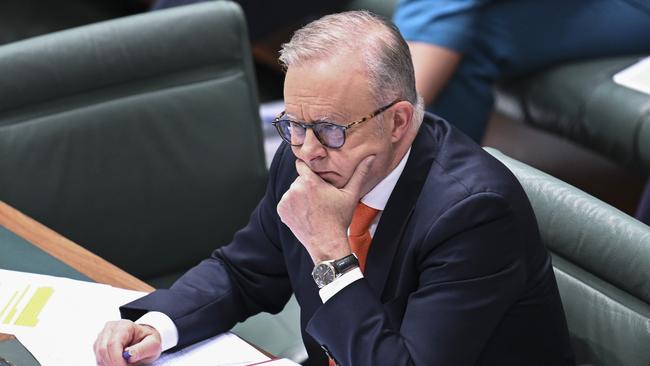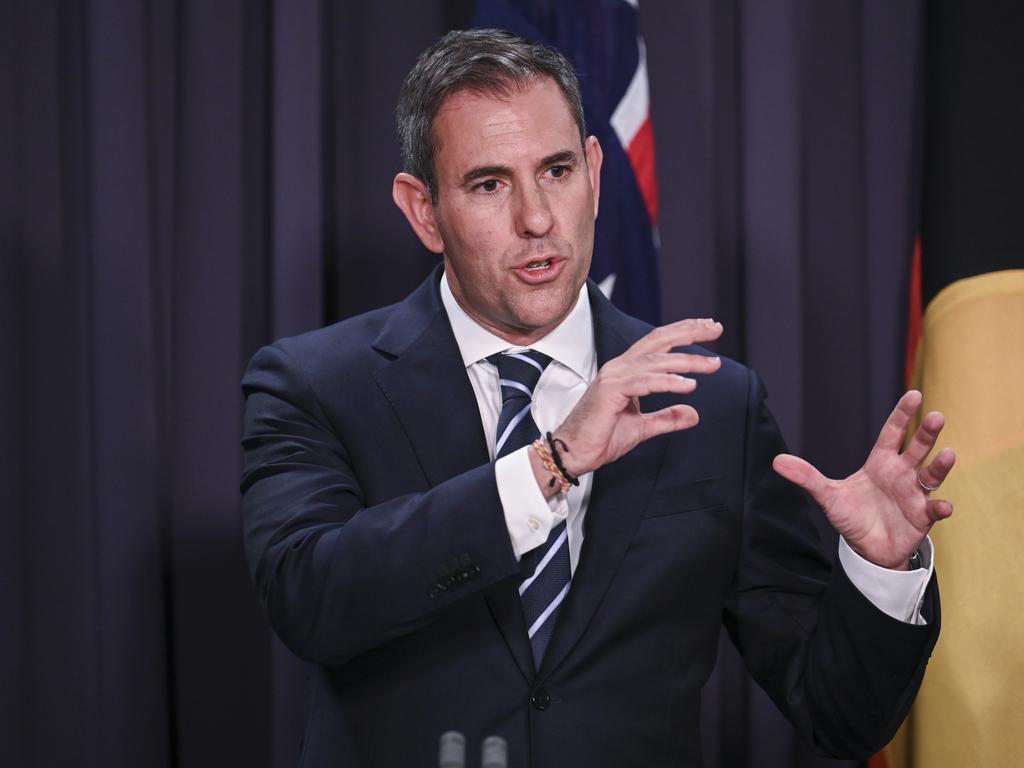Bumper jobs growth risk to Labor rate cut hopes
Anthony Albanese’s hopes of a pre-election rate cut risk being crushed as the economy added a bumper 64,100 jobs last month, driven by the soaring growth of taxpayer-funded roles including in the care economy.

Anthony Albanese’s hopes of a pre-election rate cut risk being crushed after the economy added a bumper 64,100 jobs last month, driven by soaring growth of taxpayer-funded roles including in the care economy.
Investors pushed back expectations of a quarter-point rate cut by the Reserve Bank from February to April while economists warned relief may not come for household borrowers until the second half of next year, after the unemployment rate in September was unchanged at 4.1 per cent, undershooting expectations.
Employment growth far exceeded market expectations of 25,200 more jobs, but analysis by The Australian showed 82.2 per cent of the 46 million additional hours worked in the September quarter were in “non-market” sectors covering the public service, education, and healthcare, threatening to drive productivity lower still.
Jarden economist Anthony Malouf said the labour market was among the strongest in the world but was being “greatly supported by public sector and public dominated jobs, especially NDIS-related employment”.
RBA governor Michele Bullock has pointed to the continued strength of the jobs market as one of the reasons behind the central bank’s decision to effectively rule out cutting rates from 4.35 per cent until after Christmas. The bank has also warned that the economy is above “full employment” and exacerbating inflationary pressures.
Jim Chalmers hailed the jobs figures as a sign Labor’s economic plan was working, declaring it was the first time a federal government had overseen one million new jobs in a parliamentary term.
“More than a million new jobs in one parliamentary term is a pretty remarkable achievement in a slowing economy and it means more new jobs have been created on our watch than any other government at any time,” the Treasurer said.
Opposition employment spokeswoman Michaelia Cash said the growth in public sector roles was “not sustainable”.
“In the 2½ years under this government, you have seen an increase in the rate of jobs growth in the public sector,” Senator Cash said. “That’s just the government increasing the size of the bureaucracy. The Albanese government is all about increasing the size of the public sector, whilst attacking the private sector with red tape and uncertainty.”
KPMG chief economist Brendan Rynne estimated that the number of taxpayer-funded, non-market roles had outstripped private sector positions since the onset of the coronavirus pandemic, despite the former only representing 17 per cent of the economy.
“This increase in public sector and non-market sector employment is likely to be a contributing factor in the decline in measured national labour productivity,” Dr Rynne said.
HSBC chief economist Paul Bloxham warned that the “unquestionably strong” jobs market coupled with underlying inflation remaining “tangibly” above the RBA’s 2 to 3 per cent target band, could leave the RBA unable to cut rates until the second half of next year.
“The strength of the labour market adds to the risk that it could take even longer for the RBA to cut, or that they are not able to cut at all,” Mr Bloxham said. “We see a growing risk that the RBA may miss the easing phase altogether, and today’s numbers add to that risk.”
Deutsche Bank chief economist Phil O’Donaghue shared concerns that rate cuts may be pushed back. “If you are looking at a weaker labour market, then we’d be enthusiastically talking about rate cuts, but demand for employment has strengthened,” Mr O’Donaghue said.
He pencilled in a rate cut for May next year.
“If unemployment falls, I can’t see inflation getting back to target,” Mr O’Donaghue said.
“Something’s got to give … and the very impolite conversation here is that there is one tool to resolve that if the economy won’t do it itself, and that’s higher interest rates.”
Citi Australia chief economist Josh Williamson warned that the jobs market had started “tightening again”, and had come at a time when federal and state governments were stimulating the economy via cost-of-living support.
“The labour market is arguably tighter than expected, which implies policy rates are probably not restrictive enough,” Mr Williamson said.
Commonwealth Bank’s head of Australian economics Gareth Aird – one of the most dovish forecasters who had pencilled in a rate cut for December – said his conviction on that timeline had dipped.
“The board will feel less compelled to start the process of normalising the cash rate whilst the labour market data remains robust,” Mr Aird said.
Further indicating strength in the jobs market was the participation rate – the share of Australia’s working-age population in work or looking for a job – which rose to reset its record of 67.2 per cent, up from 67.1 per cent in August.
Meanwhile, the underemployment rate – which measures the share of people in work but looking for additional hours – dipped to 6.3 per cent, down from 6.5 per cent in August, according to the seasonally adjusted figures.
September’s jobs gains were overwhelmingly driven by the increase in full-time positions, which rose by 51,600, while part-time employment rose by 12,500.
As still-strong migration drives population growth, about 39,000 new jobs need to be created every month to keep the unemployment and participation rate stable.
According to its own staff forecasts released in August, the Reserve Bank projects the unemployment rate to rise to 4.3 per cent by year’s end. From there, it estimates the key jobless measure will inch higher to 4.4 per cent by mid-2025.
Fresh quarterly inflation data, scheduled for release next Wednesday, will be closely scrutinised for clues as to when the central bank will press ahead with rate reductions.





To join the conversation, please log in. Don't have an account? Register
Join the conversation, you are commenting as Logout